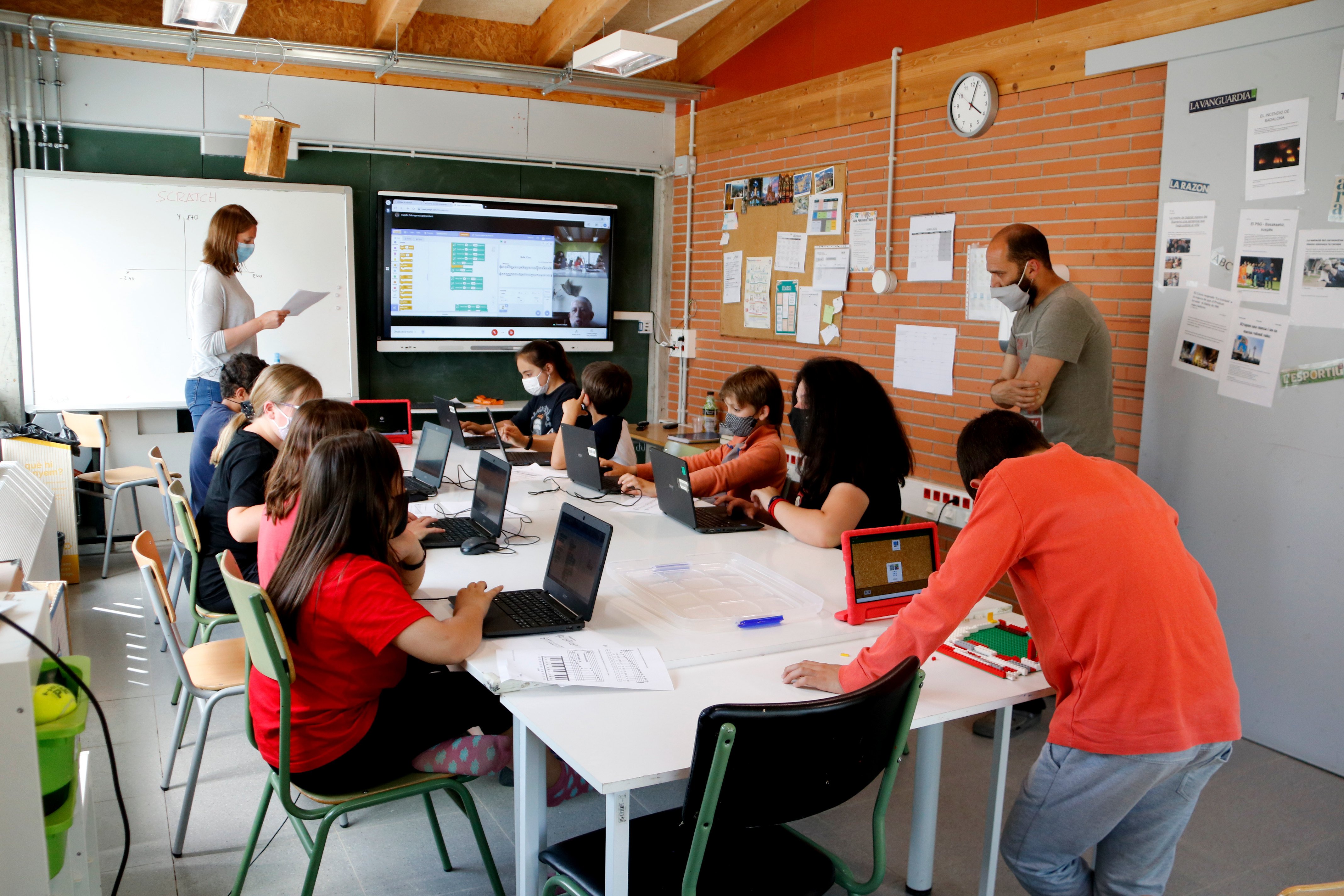Spanish judges have once again stepped into Catalonia's classrooms with court rulings that order three schools to use Castilian as the teaching language for 25% of classes from this September, when the school year begins. Families of some students at these schools, located in the counties of Garraf, Baix Llobregat and Baix Empordà filed legal complaints to achieve this, and an administrative disputes chamber of the Catalan High Court (TSJC) has ruled in their favour in five different interim rulings, according to the newspaper ABC.
However, this attack on the Catalan-language immersion system will only affect the classes attended by the children of the families who filed the appeals. This was decided by the TSJC at the end of June, accepting the request for interim measures requested by the parents for the start of the next school year, which begins on 13 September.
In addition, it follows a recent Spanish government decision that it will not attempt to enforce the application of such rulings, as it believes the competency is in the hands of the Catalan education authorities.
"Irreparable damage"
In its decision today, the TSJC endorses doctrine previously set by the Spanish Supreme Court, accepting the requests made by parents who, assisted by the pressure group Asamblea por una escuela bilingüe ("Assembly for a bilingual school"), asserted that the fact of not speaking Castilian (that is, Spanish) at school "with the passage of time and the delay in its application, year after year, generates damage to students that could be irreparable."
The court makes an additional point and affirms that this measure does not intend to harm the maintenance of Catalan as the "centre of gravity of the system" but demands the vehicular presence of Castilian in a "reasonable proportion", which it has set at 25%. Moreover, for the court, this cannot be an "artifice with a mere appearance of the obligatory use of Spanish."
Protecting children's identities
The rulings therefore call for the two languages to "coexist normally", it being "legitimate for Catalan, for the purpose of linguistic normalization, to be the centre of this model of bilingualism", as long as this does not mean the exclusion of Spanish, according to the TSJC.
Thus, the TSJC calls to the Catalan government and more specifically its education ministry to apply these measures for the next academic year and, together with the centres, take the "necessary precautions" to preserve "the identity and privacy" of families that take such legal actions, especially the students.
Application won't be forced
However, last week it emerged that the Spanish government does not intend to force the execution of the Catalan High Court ruling that sets this minimum of 25% of classes in Castilian for Catalonia's classrooms. Spanish ministry sources argue that the setting of a particular percentage of classes which must be given in each language is up to the Catalan government, as the competency for education is held by autonomous communities, not by Spain's central government. Thus, taking action to ensure the ruling was followed in practice would imply an invasion of the powers of the Catalan government.
The ruling that set in motion this latest controversy was delivered in December 2020, when the TSJC ruled partially in favour of an appeal filed by the Spanish education ministry itself and established the minimum figure of 25% Castilian in schools in Catalonia. In addition, it asserted that the current use of the Castilian language is "residual", a curious observation at a time when the use of Catalan continues to decline among young people.
Since the 1980s, the public education system in Catalonia has been based on a principle of language immersion, with the Catalan language being used as the sole teaching language at both primary and secondary level, in order to ensure that all students learn not only the more socially-prevalent Castilian language, but also the Catalan language, which about 35% of the Catalan population said they used most often in a 2018 survey.
In the main image, a primary school classroom during the Covid pandemic / ACN

